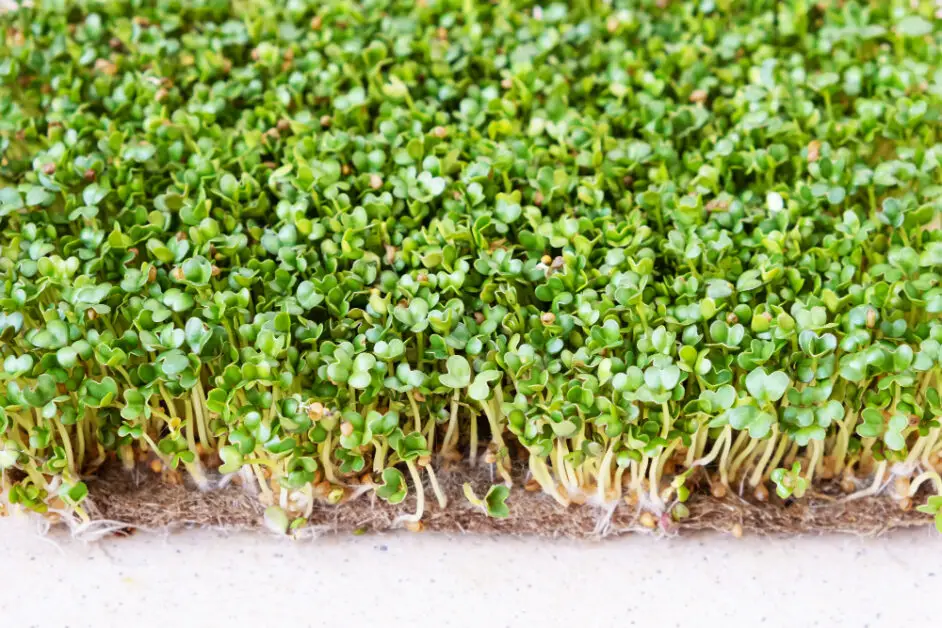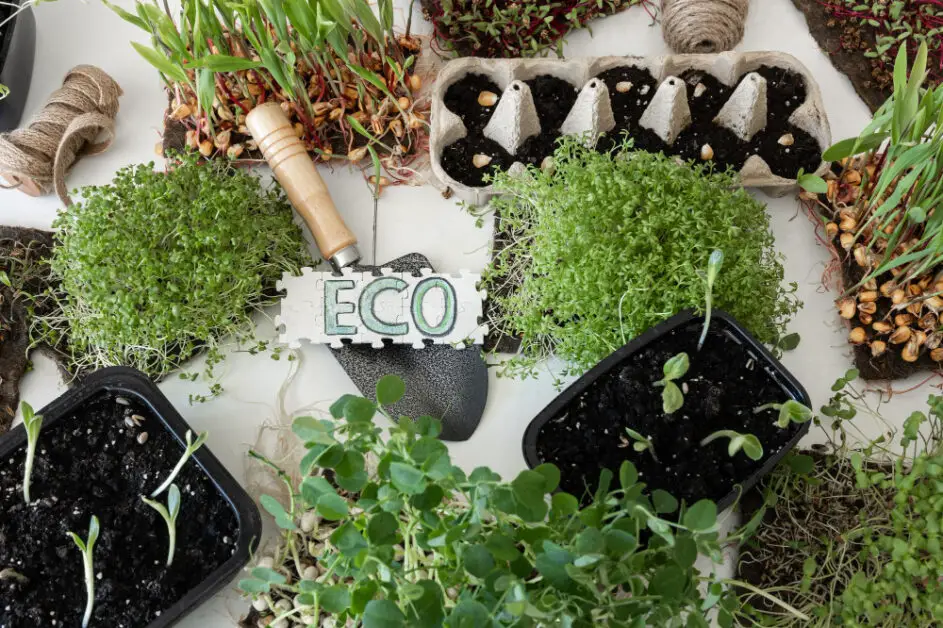Why You Should Ditch Rockwool and Try These 10 Awesome Alternatives
The drawbacks of Rockwool insulation
Rockwool insulation, also known as mineral wool or stone wool, is a popular choice for many homeowners due to its fire-resistant properties and excellent soundproofing capabilities. However, it’s important to be aware of the drawbacks associated with this type of insulation.
One of the main concerns with Rockwool insulation is its potential health risks. The fibers in Rockwool can be irritating to the skin, eyes, and respiratory system if proper precautions are not taken during installation. It is crucial to wear protective clothing, gloves, goggles, and a mask to minimize the risk of exposure to these fibers. Additionally, people with respiratory conditions such as asthma may experience discomfort or worsened symptoms when exposed to airborne Rockwool particles.
Another drawback of Rockwool insulation is its relatively low thermal resistance compared to other insulation materials available in the market. While it can provide reasonable energy efficiency, its insulating properties may not match those of alternatives such as cellulose or spray foam insulation. This means that homeowners may need to use thicker layers of Rockwool insulation to achieve the same level of thermal performance, resulting in additional costs and reduced usable space in walls and ceilings.
Furthermore, Rockwool insulation is not environmentally friendly. The production process involves melting and spinning rock or slag into fibers, which generates significant amounts of greenhouse gas emissions. In addition, its disposal can be problematic, as Rockwool is not biodegradable.
Considering these drawbacks, homeowners should carefully assess their insulation needs and explore alternative options that may better suit their requirements. From health concerns to environmental implications, it is crucial to consider all aspects before deciding on the best insulation material for your home.
Some other disadvantages that include are:
| Disadvantages |
|---|
| Not biodegradable |
| Slightly more expensive than similar insulating materials like fiberglass and cellulose |
| Health risks associated with inhaling slivers of mineral wool 2 |
| Extra weight compared to other insulating materials |
| Can be difficult to install in tight spaces |
| Can absorb moisture and cause water damage to the building structure |
| Can be a breeding ground for pests such as rodents and insects |
Health concerns associated with Rockwool
Rockwool insulation, also known as mineral wool or stone wool, is a popular choice for many homeowners due to its fire-resistant and sound-absorbing properties. However, it is important to consider the potential health concerns associated with this type of insulation.
One of the main concerns with Rockwool insulation is its composition. It is made from synthetic fibers that can be irritating to the skin, eyes, and respiratory system. When installing or handling Rockwool insulation, it is crucial to wear protective clothing, gloves, goggles, and a mask to minimize any potential health risks.

In addition, some studies have raised concerns about the presence of small fibers in Rockwool insulation that can become airborne. These fibers, when inhaled, can cause respiratory issues such as coughing, wheezing, and shortness of breath. Prolonged exposure to these fibers may also lead to more serious conditions such as lung cancer or mesothelioma, although the risk is relatively low compared to other types of insulation.
To ensure the safety of individuals working with or living in spaces insulated with Rockwool, it is essential to follow proper installation procedures and take precautions to minimize exposure to the fibers. Regular maintenance and inspection of the insulation can also help identify any potential issues and address them promptly. By being aware of these health concerns and taking necessary precautions, homeowners can still enjoy the benefits of Rockwool insulation while prioritizing their well-being.
Natural alternatives to Rockwool insulation
Rockwool insulation has long been a popular choice for its fire resistance and excellent sound absorption properties. However, concerns about the environmental impact and potential health hazards of Rockwool have led many to seek out natural alternatives. Thankfully, there are several options available that provide comparable insulation qualities while minimizing the negative effects associated with Rockwool.
One such natural alternative is cellulose insulation, which is made from recycled paper fibers. Not only does cellulose insulation have excellent thermal performance, but it is also non-toxic and does not release harmful particles into the air. Additionally, cellulose insulation is resistant to pests, mold, and moisture, making it a durable and long-lasting option for homeowners. With the increasing emphasis on sustainability and eco-friendly materials, cellulose insulation provides a viable solution for those seeking an alternative to Rockwool.
The benefits of cellulose insulation
Cellulose insulation is a versatile and environmentally-friendly option for enhancing energy efficiency in buildings. Derived from recycled paper and treated with fire retardant additives, cellulose insulation offers numerous benefits that make it a popular choice among homeowners and contractors.
One of the key advantages of cellulose insulation is its exceptional thermal performance. With its dense and fibrous structure, cellulose effectively traps air, creating an insulating barrier that helps maintain optimal indoor temperatures. This can lead to significant energy savings by reducing the need for excessive heating or cooling. Additionally, cellulose insulation has excellent sound-dampening properties, providing a quieter and more comfortable living environment.
Another notable benefit of cellulose insulation is its eco-friendliness. Made from recycled paper products, cellulose helps divert waste from landfills while reducing the demand for virgin materials. It is also treated with fire retardant additives that enhance its fire resistance, making it a safe and reliable choice for insulation. Furthermore, cellulose is a breathable material that allows for adequate air circulation and moisture management, reducing the risk of mold and mildew growth.
Exploring the advantages of cotton insulation
Cotton insulation is a natural and eco-friendly alternative to traditional insulation materials. Derived from recycled cotton fibers, this insulation option offers several advantages for homeowners and the environment. One of the primary benefits of cotton insulation is its excellent thermal performance. With a high R-value (the measure of thermal resistance), cotton insulation effectively reduces heat transfer, helping to maintain a comfortable temperature in homes throughout the year.
In addition to its thermal properties, cotton insulation also provides excellent soundproofing capabilities. This can be particularly advantageous in urban areas where noise pollution from traffic and neighbors can be a concern. By acting as a barrier to noise transmission, cotton insulation creates a quieter and more peaceful living environment. Furthermore, cotton insulation’s sound-absorbing properties make it a popular choice for home theaters, music studios, and other spaces where sound quality is of utmost importance. So, if you are looking for an insulation material that provides both thermal and acoustic benefits, cotton insulation is definitely worth considering.
The effectiveness of sheep’s wool insulation
Sheep’s wool insulation is renowned for its effectiveness in maintaining thermal efficiency in buildings. This natural and sustainable material is derived from the coats of sheep and has been utilized for centuries due to its remarkable insulation properties.
The unique structure of sheep’s wool fibers allows it to trap air, creating a layer of insulation that effectively prevents heat transfer. This helps to keep buildings warm during winter and cool during summer, resulting in reduced energy consumption and costs. Additionally, sheep’s wool insulation has excellent moisture-wicking properties, absorbing and releasing moisture, which helps regulate humidity levels and prevents the growth of mold and mildew.
Furthermore, sheep’s wool insulation is also fire resistant, making it a safe choice for homes and commercial buildings. It does not release harmful gases, such as toxic fumes or chemicals, in the event of a fire. This makes it an ideal option for those concerned about the health and safety of their living or working spaces. In addition, sheep’s wool is a natural and renewable resource, making it an eco-friendly choice for environmentally conscious individuals.
In terms of its acoustic insulation properties, sheep’s wool performs well in reducing noise transmission. Its dense fibers effectively absorb sound waves, providing a quieter and more comfortable living or working environment. Whether it’s for residential or commercial purposes, sheep’s wool insulation offers both thermal and acoustic advantages that cater to various needs.
Overall, the effectiveness of sheep’s wool insulation can be attributed to its ability to regulate temperature, absorb moisture, provide fire resistance, and offer sound insulation. This natural and sustainable material presents an excellent choice for those seeking an efficient and environmentally friendly option for insulating their buildings.
Here is a table that shows more detailed information about the effectiveness of wool insulation:
| Insulation Material | Thermal Conductivity Rating (W/mK) | R-Value | Advantages |
|---|---|---|---|
| Sheep’s Wool Insulation | 0.035 – 0.04 | 3.5 – 3.8 | – Natural and eco-friendly alternative to conventional insulation materials. \n- Crimped structure of wool fibers creates millions of small air pockets that trap air and provide an effective thermal barrier. \n- Thermal conductivity rating is lower than many other types of insulation material, such as mineral wool or cellulose insulation. \n- R-value is higher than many other types of insulation material, such as mineral wool or cellulose insulation. \n- Can absorb 33% of its weight in moisture without compromising its insulating ability. \n- Offers outstanding sound insulation. \n- Does not burn. \n- Does not cause irritation if handled with bare skin . |
| Mineral Wool Insulation | 0.035 – 0.044 | 3.1 – 3.7 | – Made from natural or synthetic minerals, such as rock or slag that are melted and spun into fibers. \n- Thermal conductivity rating is higher than sheep’s wool insulation. \n- R-value is lower than sheep’s wool insulation . |
| Cellulose Insulation | 0.038 – 0.042 | 3.2 – 3.7 | – Made from recycled paper products, such as newsprint and cardboard. \n- Thermal conductivity rating is higher than sheep’s wool insulation. \n- R-value is lower than sheep’s wool insulation . |
The eco-friendly features of hemp insulation
Hemp insulation is gaining popularity in the construction industry due to its eco-friendly features. Made from the fibrous stems of the hemp plant, this insulation material offers several sustainable benefits. One of the key advantages is its low carbon footprint. Hemp plants absorb significant amounts of carbon dioxide during their growth, making hemp insulation a carbon-negative material. According to research, one acre of hemp can absorb up to 10 tons of CO2, making it a highly sustainable option for reducing greenhouse gas emissions.

In addition to its carbon sequestration properties, hemp insulation also requires fewer resources to produce compared to traditional insulation materials. Hemp plants have a rapid growth rate and require minimal water and pesticides, lowering the environmental impact of cultivation. Furthermore, the production process for hemp insulation typically involves minimal energy consumption, further reducing its overall ecological footprint. This makes hemp insulation an excellent choice for environmentally conscious individuals who are looking to decrease their environmental impact without compromising on performance.
Considering the benefits of straw insulation
Straw insulation is gaining popularity as a sustainable and environmentally friendly alternative for insulating homes and buildings. Derived from the waste product of agricultural crops such as wheat, barley, and rice, straw insulation offers several benefits that make it an attractive choice for eco-conscious individuals.
One of the key advantages of straw insulation is its excellent thermal insulation properties. The tightly packed straw fibers create a natural barrier that helps to regulate indoor temperature, keeping the heat out during the summer months and retaining warmth during colder seasons. This can significantly reduce the reliance on heating and cooling systems, leading to energy savings and lower utility bills. Additionally, straw insulation has a high R-value, which measures its resistance to heat flow, making it a highly efficient choice for insulation.
Another benefit of straw insulation is its breathability. Unlike synthetic insulation materials, straw allows moisture to pass through it, preventing the accumulation of condensation and potential mold growth. This natural breathability ensures a healthier indoor environment by improving air circulation and reducing the risk of respiratory issues. Additionally, straw insulation is resistant to pests and rodents, providing an added layer of protection for homes and buildings.
With its sustainable sourcing, impressive thermal insulation properties, and breathability, straw insulation offers a compelling solution for eco-conscious individuals seeking an effective and environmentally friendly way to insulate their homes and buildings.
• Straw insulation is derived from the waste product of agricultural crops, making it a sustainable and environmentally friendly choice.
• The tightly packed straw fibers create a natural barrier that helps regulate indoor temperature, leading to energy savings and lower utility bills.
• Straw insulation has a high R-value, making it highly efficient for insulating homes and buildings.
• Unlike synthetic insulation materials, straw allows moisture to pass through it, preventing condensation buildup and potential mold growth.
• Straw insulation improves air circulation and reduces the risk of respiratory issues by providing breathability.
• It is resistant to pests and rodents, offering an added layer of protection for homes and buildings.
The thermal efficiency of cork insulation
Cork insulation is renowned for its exceptional thermal efficiency, making it a popular choice for maintaining comfortable temperatures within buildings. Due to its low thermal conductivity, cork insulation provides excellent insulation properties, preventing the transfer of heat between different spaces and minimizing energy loss. This efficiency helps to reduce energy consumption and enhances the overall sustainability of the structure.
One of the reasons cork insulation stands out in terms of thermal performance is its unique cellular structure. The cork cells are filled with a gas, giving the material its low conductivity. This cellular structure also contributes to cork’s ability to resist temperature fluctuations, further enhancing its insulating properties. Moreover, cork is a natural material, and its sustainable production and harvesting processes add to its eco-friendly attributes. With these notable features, cork insulation proves to be a reliable and efficient solution for those seeking to optimize thermal efficiency in their homes or buildings.
Cork insulation is a popular natural alternative to traditional insulation materials. Here is a checklist of the thermal efficiency of cork insulation:
- Cork has a thermal conductivity of 0.04 to 0.05 watts per square metre . This makes it an effective insulation material, although some synthetic insulation materials are even more effective.
- Cork insulation can be combined with other insulation materials to reduce heat loss from a building in winter .
- Cork has a high specific heat capacity and high thermal inertia. It performs well across a wide range of temperatures, keeping homes pleasantly warm in the winter and cool in the summer .
The advantages of recycled denim insulation
Recycled denim insulation is becoming an increasingly popular choice among environmentally-conscious homeowners. This innovative insulation material is made from post-consumer denim, diverting old jeans and other cotton apparel from landfills. One of the key advantages of recycled denim insulation is its excellent thermal performance. With its high R-value, it effectively prevents heat transfer, keeping your home warm in the winter and cool in the summer. Additionally, recycled denim insulation is known for its superior soundproofing capabilities, reducing noise transmission between rooms and floors. This can be particularly beneficial in homes located in busy urban areas or near airports. By opting for recycled denim insulation, you can create a more comfortable and peaceful living environment for you and your family.
In addition to its insulation properties, recycled denim insulation also offers excellent fire resistance. This is due to the natural fire-retardant characteristics of cotton fibers, which can help to minimize the spread of flames in the event of a fire. As safety is a top priority for homeowners, the fire-resistant nature of recycled denim insulation provides added peace of mind. Furthermore, this insulation material is free from formaldehyde and other harmful chemicals often found in traditional insulation products, making it a healthier choice for both you and the environment. By choosing recycled denim insulation, you can create a safer and healthier living space while also reducing your ecological footprint.
For further information about the rockwool alternatives watch the video.
Understanding the benefits of coconut fiber insulation
Coconut fiber insulation, also known as coir insulation, is a sustainable and eco-friendly option that offers numerous benefits for both the environment and homeowners. Made from the fibrous husk surrounding the coconut, this natural material proves to be an excellent choice for insulation purposes.
One of the key advantages of coconut fiber insulation is its impressive thermal performance. With its dense structure, it effectively reduces heat transfer, keeping homes cool in hot climates and warm during colder seasons. This energy-efficient solution not only helps homeowners save on heating and cooling costs but also minimizes the overall carbon footprint of the building. Additionally, coconut fiber insulation is resistant to moisture and mold, making it ideal for areas prone to humidity or dampness.

Furthermore, coconut fiber insulation is a sustainable alternative that promotes environmental preservation. The production process involves the use of a renewable resource – coconuts – which significantly reduces the demand for non-renewable materials. Unlike traditional insulation options like fiberglass or foam, coconut fiber insulation does not release harmful chemicals into the environment, ensuring a healthier indoor air quality. By opting for this natural solution, homeowners can contribute to a greener future while enjoying the long-lasting benefits coconut fiber insulation provides.
Exploring the effectiveness of aerogel insulation
Aerogel insulation, also known as “frozen smoke,” has gained significant attention in recent years due to its unparalleled thermal performance. Derived from a gel composed of silica, carbon, or other materials, aerogel insulation boasts an incredibly low thermal conductivity, making it one of the most effective insulation materials available. In fact, it holds the Guinness World Record for being the lightest solid material while also exhibiting superior insulating properties.
Due to its remarkable structure, aerogel insulation significantly reduces heat transfer by trapping air within its nanoporous matrix. This results in a highly efficient barrier against heat loss or gain, making it an ideal choice for applications where space is limited but thermal efficiency is crucial. From residential buildings to industrial facilities, aerogel insulation offers the potential to greatly improve energy efficiency and reduce heating and cooling costs. Additionally, its impressive ability to dampen sound vibrations makes it an excellent option for noise insulation as well.
However, it is essential to note that while aerogel insulation offers exceptional thermal performance, it does come with some drawbacks. Its high production costs and fragility have limited its widespread adoption. Furthermore, installation can be challenging, requiring specialized expertise and careful handling, as the material is delicate. Nonetheless, ongoing research and development efforts in the field are aiming to overcome these limitations and make aerogel insulation more accessible and user-friendly in the future.
The advantages of cellulose spray foam insulation
Cellulose spray foam insulation offers a range of advantages for homeowners looking to improve the energy efficiency and comfort of their homes. One notable benefit is its excellent thermal insulation properties. Cellulose spray foam has a high R-value, which indicates its ability to resist heat flow. This means that it can effectively reduce heat transfer through walls, ceilings, and floors, keeping the indoor temperature stable and reducing energy consumption for heating and cooling.
Another advantage of cellulose spray foam insulation is its ability to create an airtight seal in buildings. Unlike traditional insulation materials, cellulose spray foam expands and fills gaps and cracks, ensuring that there are no air leaks. This prevents drafts, air infiltration, and moisture problems, enhancing the overall comfort and indoor air quality of the living space. By creating a thermal barrier and reducing air leakage, cellulose spray foam insulation can contribute to significant energy savings and lower utility bills.
The benefits of using recycled newspaper insulation
When it comes to insulation materials, one eco-friendly option stands out: recycled newspaper insulation. Made from shredded newspaper and treated with a fire-retardant chemical, this type of insulation offers several benefits that make it a popular choice among environmentally-conscious homeowners.
First and foremost, using recycled newspaper insulation helps reduce waste and promote sustainability. By repurposing old newspapers, this insulation not only prevents them from ending up in landfills but also minimizes the demand for new raw materials. This recycling process significantly lowers the carbon footprint associated with traditional insulation materials, making it a greener alternative.
Additionally, recycled newspaper insulation boasts excellent thermal efficiency. With its high R-value, which measures insulation’s ability to resist heat flow, this type of insulation helps maintain a comfortable temperature inside your home throughout the year. Furthermore, its tightly packed fibers create a barrier that reduces heat transfer, ensuring optimal energy efficiency and potential cost savings on heating and cooling bills.
Moreover, recycled newspaper insulation offers superior soundproofing properties. Its dense composition helps absorb and dampen sound waves, making it an ideal choice for homeowners who desire a quieter living environment. Whether you want to create a peaceful study space or reduce noise transmission between rooms, this insulation can make a noticeable difference in sound reduction.
Another advantage of recycled newspaper insulation is its non-toxic nature. With the use of environmentally-friendly fire retardants during the manufacturing process, this insulation ensures that your home remains safe and healthy. It doesn’t release harmful chemicals or produce volatile organic compounds (VOCs), which can contribute to poor indoor air quality. This benefit is particularly important for those with respiratory sensitivities or allergies.
In conclusion, recycled newspaper insulation offers multiple benefits that make it a compelling choice for homeowners seeking both eco-friendliness and performance. By utilizing this sustainable insulation material, you not only reduce waste and minimize environmental impact but also enjoy excellent thermal efficiency, soundproofing qualities, and the peace of mind that comes with a non-toxic product.
Considering the effectiveness of mycelium insulation
Mycelium insulation is an innovative and promising solution for both environmental and energy efficiency concerns. Derived from the vegetative part of a fungus, mycelium insulation offers a range of benefits that make it an attractive option for eco-conscious homeowners.
One of the key advantages of mycelium insulation is its sustainability. Unlike traditional insulation materials that are made using non-renewable resources, mycelium insulation is derived from agricultural waste products such as corn stalks or peanut shells. This not only reduces the strain on natural resources but also provides a valuable secondary use for agricultural waste. Additionally, mycelium insulation is biodegradable and compostable, making it an ideal choice for those seeking a truly eco-friendly alternative.
In terms of its thermal performance, mycelium insulation does not fall short either. Its dense network of interconnected fibers provides excellent insulation properties, effectively preventing heat transfer and reducing energy consumption in buildings. This can result in significant energy savings and lower utility bills over time. Moreover, mycelium insulation has been shown to have good sound insulation properties, ensuring a quieter and more comfortable living environment.
While mycelium insulation is a relatively new option in the market, its potential as an effective and sustainable insulation material cannot be overlooked. As research and development continue to explore its performance and efficiency, it is likely to gain more traction as a viable alternative to traditional insulation materials.
What is mycelium insulation?
Mycelium insulation is a natural alternative to traditional insulation materials. It is made from the roots of mushrooms, known as mycelium, which are grown and formed into panels. These panels are then used to insulate buildings.
How does mycelium insulation compare to Rockwool insulation?
Mycelium insulation is considered a more eco-friendly option compared to Rockwool insulation. It is made from sustainable materials and does not release harmful toxins. Additionally, mycelium insulation has the potential to be biodegradable and can contribute to reducing landfill waste.
Is mycelium insulation effective in terms of thermal efficiency?
Yes, mycelium insulation can be highly effective in terms of thermal efficiency. It has the ability to trap air pockets within its structure, providing excellent insulation properties. This helps to regulate temperature, reduce energy consumption, and create a comfortable living environment.
Are there any health concerns associated with mycelium insulation?
Mycelium insulation is generally considered to be safe and non-toxic. However, it is always recommended to follow proper safety guidelines during installation to minimize any potential health risks. It is advisable to wear protective clothing and a mask to avoid inhaling any particles during the installation process.
Can mycelium insulation be used in all types of buildings?
Mycelium insulation can be used in a wide range of buildings, including residential, commercial, and industrial structures. It can be applied to walls, roofs, and floors, providing effective insulation in various building types.
How does mycelium insulation contribute to environmental sustainability?
Mycelium insulation is considered an eco-friendly option due to its sustainable production process and biodegradable nature. It is made from renewable resources and has the potential to reduce the carbon footprint associated with traditional insulation materials. Additionally, mycelium insulation can contribute to reducing waste by utilizing agricultural by-products as a growth medium.
Can mycelium insulation contribute to soundproofing?
Yes, mycelium insulation has the potential to contribute to soundproofing in buildings. Its dense structure can help absorb and dampen sound waves, reducing noise transmission between rooms and from the outside environment.
How long does mycelium insulation typically last?
The lifespan of mycelium insulation can vary depending on various factors such as installation quality, maintenance, and environmental conditions. However, when properly installed and maintained, it can have a comparable lifespan to other insulation materials, generally lasting for several decades.
Is mycelium insulation resistant to mold and pests?
Mycelium insulation has inherent properties that make it resistant to mold growth and pests. The natural structure of mycelium inhibits the growth of mold and fungi, providing a healthier indoor environment. Additionally, it is not a food source for pests, reducing the risk of infestation.
Can mycelium insulation be recycled at the end of its lifespan?
Yes, mycelium insulation has the potential to be recycled or composted at the end of its lifespan. Since it is made from organic materials, it can be broken down and used as a nutrient-rich soil amendment, contributing to a circular economy approach. However, specific recycling options may vary depending on local waste management facilities and regulations.






